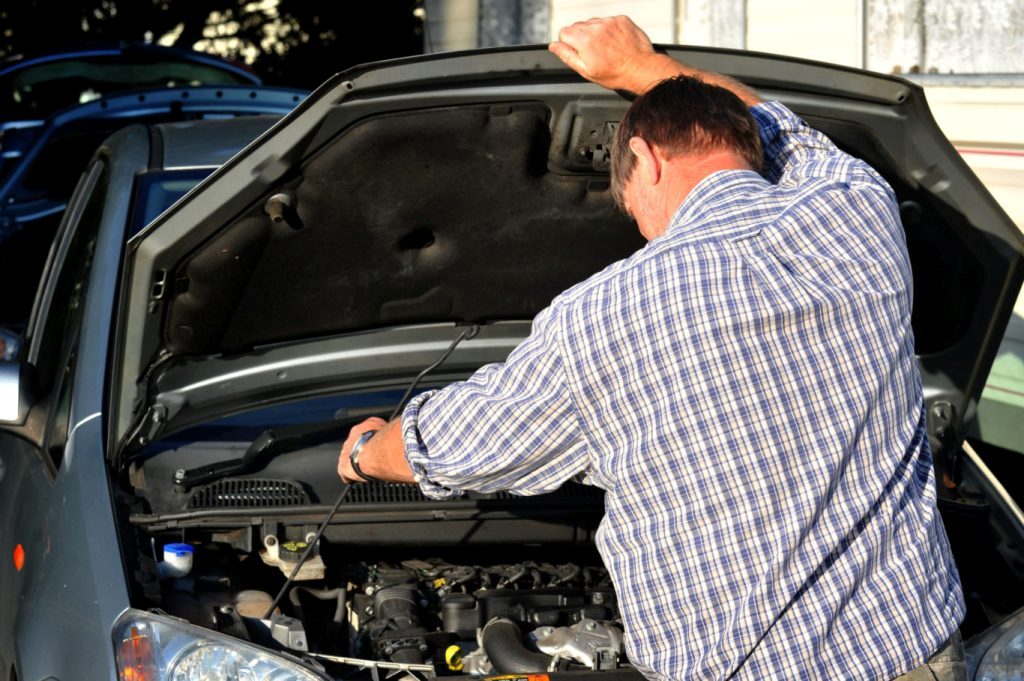Over the years, the MOT has expanded from being a simple test of brakes, steering and suspension into a complete inspection of all aspects of your car. The fail rate is around 35% for cars on their first inspection. Most of these failures will be for things which are relatively easy to resolve, and after a bit of quick repair work, the car will sail through its MOT on a retest. A smaller number of cars are found to be so badly damaged that the repairs are uneconomical – they’re more expensive than the value of the vehicle. However, many cars failing a MOT test are doing so for reasons which are easy to spot and even easy to deal with before you take your car along to the garage. If you know the most common reasons why a car fails its MOT, then this could help you be in the 65% of cars which pass first time.
Lighting
The most common reason of all for MOT fails is something to do with lighting. This is a wide category of faults which covers everything and anything to do with rear lights, headlights and indicators. Around 17% of cars fail in this category and often, it’s for a fault which is easy to pick up beforehand. The MOT guidelines state that all headlights should be working properly, pointing in the right direction and not overly dirty. Indicators should flash properly when turned on and off, as should the hazard warning lights. Fog lights should be bright and come on when you flick the switch. At least two brake lights should be operating. If you have a car with a third brake light in the rear window then you can get away with two out of the three working, but really should get bulbs replaced as quickly as possible when you notice the fault. Checking the lights is easy. All you need is someone to stand behind the car and check everything’s working as you switch the lights on and off. If you spot a bulb not working, you can usually replace it yourself rather than pay inflated labour charges for a mechanic to do the job for you.

Tyres
14% of MOT failures are down to a problem with tyres, mostly because the tread isn’t deep enough. Lack of tread depth counts as a dangerous fault, and you won’t be able to take your car back out on the road until you have the tyres replaced. Checking the tyre tread depth regularly is basic maintenance, and something we should all be doing every couple of weeks. There are lots of gadgets on the market which are marked with the level of the tyre tread depth. Use those if you wish but it’s just as easy to use a 20p coin. The rim on those coins is the same depth, so when the coin is pushed into the tyre you should only be able to see the middle of the coin. You’ll get a better deal on replacement tyres if you have time to shop around for the best price rather than just having to go with whatever price the garage quotes you on the day. Many of the large tyre fitting and supply places will also offer free tyre checks if you’re not confident in checking your tyres yourself.
Registration Plates
A staggering 14% of MOT failures are down to a problem with the registration plate. Rules state that your front registration plate has to be white, and the rear one yellow. You have to stick to the rules about the size of the letters, and the spacing of the characters. Any non-standard registration plate is an automatic fail. Police are stricter than ever on non-standard registration plates, so chances are that you’ll be stopped and asked to change them well before you ever get to the stage of requiring a MOT. The other thing to check with your number plates is that they are properly attached to your car, not caked in mud and with no serious damage like cracks and splits.
Driver’s View of the Road
This catch-all term concerns mostly issues concerning the mirrors and windscreen. Very small chips and cracks on the windscreen will not result in a MOT fail. However, small chips and cracks can rapidly become much bigger, so really shouldn’t be ignored. A larger crack will mean an automatic fail. Similarly, if you have your windscreen plastered with stickers, or have added a transparent tinted film, that could be counted as restricting your view too. Check also that there is enough windscreen wash in the reservoir under the bonnet. As far as mirrors are concerned, to pass a MOT you must have a functioning rear view mirror as well as a wing mirror on the driver’s side. If your mirror can’t be adjusted, or is badly damaged or scratched, you won’t pass the MOT.

Suspension
This category accounts for around 13% of MOT fails and faults are perhaps a bit harder to detect without any specialist knowledge. Suspension refers to the coils, springs and shock absorbers which means you don’t feel every bump in the road as you drive. Something as simple as hitting a pothole in the road can seriously damage your suspension and result in a MOT fail. Check your suspension by pushing down gently on each corner of your car and making sure it bounces back into place. Keep your ear open when driving for any strange knocking or clunking noises. If you do hear something strange, get the MOT checked out rather than just ignoring it and hoping it will go away on its own. Suspension problems on the MOT can be more expensive to fix than something as simple as changing a tyre or replacing brake pads. Also, if the garage has to order parts in specially and schedule in the work, it could be at least a few days until your car is returned to you.

